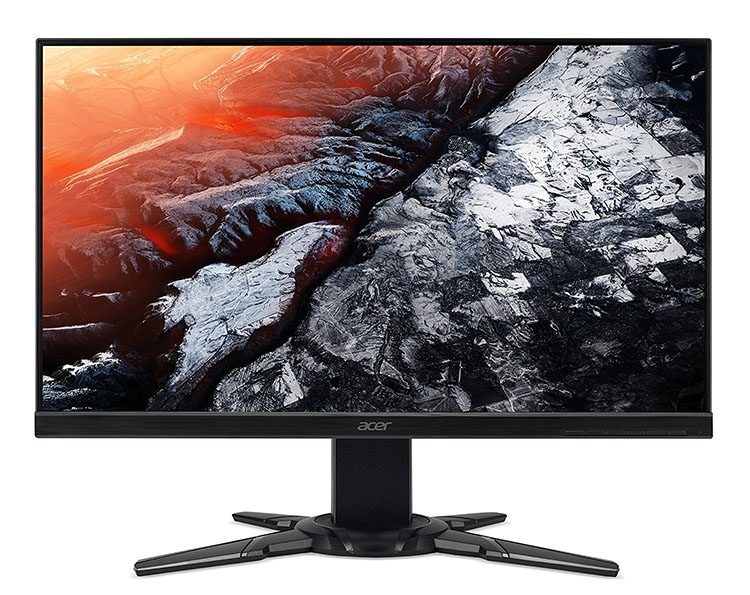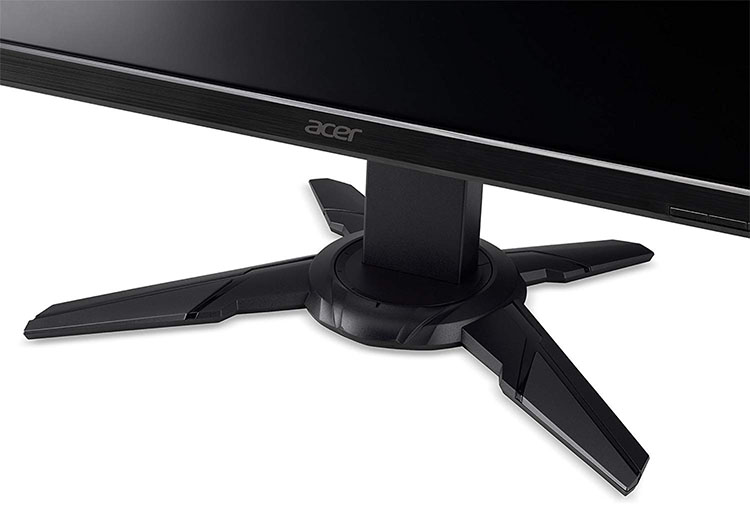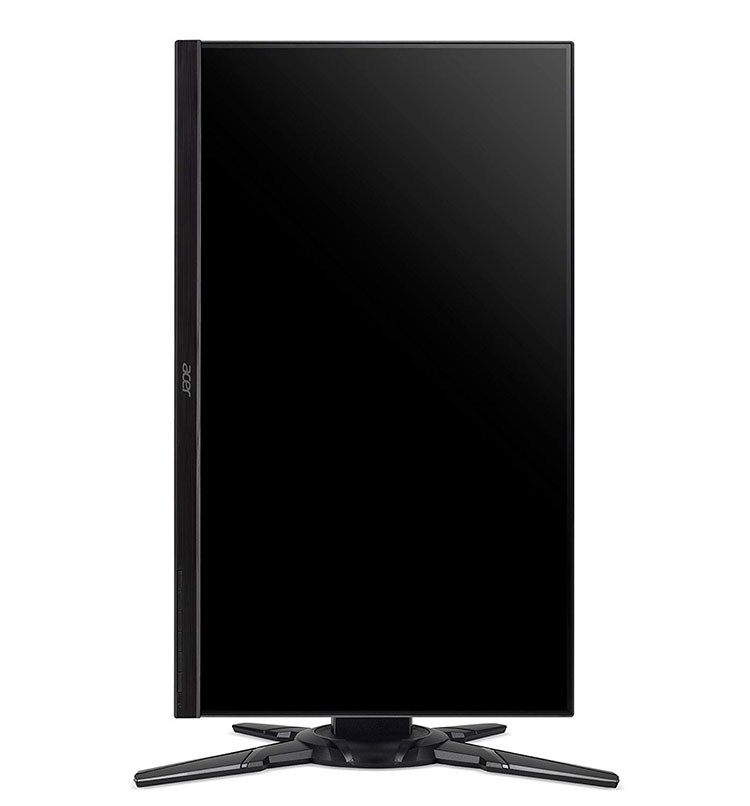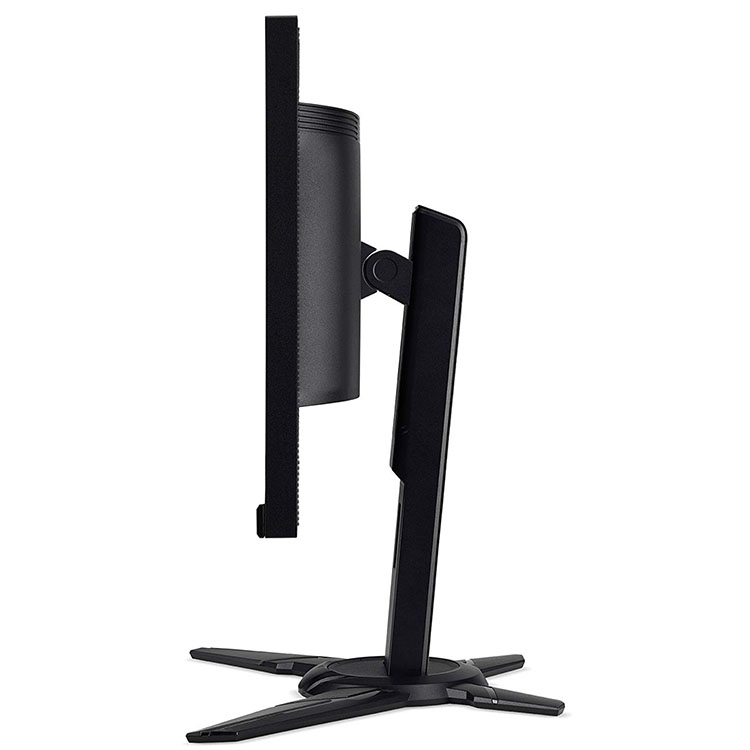Tom's Hardware Verdict
The Acer XF251Q offers good image quality, accuracy, gaming performance and build-quality for around $200. If you have a value-oriented system, it’s worth a serious look.
Pros
- +
FreeSync
- +
75Hz refresh rate
- +
Accurate, saturated color
- +
Contrast
- +
Build-quality
- +
Value
Cons
- -
Inaccurate gamma
- -
Narrow FreeSync operation window
Why you can trust Tom's Hardware
Features & Specifications
It’s not too difficult to build a competent gaming PC within a reasonable budget. But equipping that system with a decent display can be a challenge. The usual axiom is, “accurate image, high performance, low price--pick two.” Acer looks to give users all three of these in its XF251Q. It cuts a few corners to get down to $200, but not as many as you’d think. It’s a 25-inch (24.5-inch viewable) TN screen with FHD resolution, 75Hz and FreeSync. It has nearly everything found in more expensive displays and even sports decent build quality. Let’s take a look.
At 24.5 inches viewable, the XF251Q’s pixel density is a reasonable 90 pixels per inch (ppi). That’s not far below a 27-inch QHD monitor’s 109ppi. And we’ve shown in many previous reviews that TN is not as bad as some believe it to be. Many say it has inferior color quality, but our tests have shown that this is not the case. It suffers from poor viewing angles, but in this size that’s a non-factor.
For about $200, you get decent color accuracy, a sharp and bright picture, 75Hz and FreeSync. The adaptive sync lower limit is 55Hz, which is a narrow range, indeed. But modest systems will have little trouble keeping frame rates within that performance window. On paper, the XF251Q looks like an ideal complement to a budget gaming PC.
Specifications
| Panel Type & Backlight | TN / W-LED, edge array |
| Screen Size & Aspect Ratio | 24.5 inches / 16:9 |
| Max Resolution & Refresh | 1920x1080 @ 75HzFreeSync: 55-75HzDensity: 90ppi |
| Native Color Depth & Gamut | 8-bit (6-bit+FRC) / sRGB |
| Response Time (GTG) | 1ms |
| Brightness | 250cd/m² |
| Contrast | 1,000:1 |
| Speakers | 2x 2w |
| Video Inputs | 2x HDMI 1.41x VGA |
| Audio | 1x 3.5mm in1x 3.5mm out |
| USB | ✗ |
| Power Consumption | 13w, brightness @ 200 nits |
| Panel Dimensions(WxHxD with base) | 22 x 15.4-19.9 x 10.6 inches / 559 x 391-505 x 269mm |
| Panel Thickness | 2.2 inches / 56mm |
| Bezel Width | Top/sides: .3 inches / 7mmBottom: .8 inches / 21mm |
| Weight | 12.4lbs / 5.6kg |
| Warranty | Three years |
Unpacking & Accessories
Removing the XF251Q from its ample packaging reveals a stoutly built display. We were surprised at how solid its three main parts seemed given the monitor's light weight and low price. The base bolts onto the upright with two fasteners, and the resulting assembly snaps onto the panel’s back. No tools are required.
The power supply is internal, so Acer provides an IEC power cord to supply the juice. You also get HDMI and VGA cables. A snap-on clip helps tidy up the wires. The monitor comes with a quick-start guide, and remaining documentation is available on Acer’s website.
Product 360




The XF251’s styling is understated but unmistakably gaming-oriented. The base is plastic over a metal core and features small polished bits contrasted by a matte finish. That material is also used on the upright, which is as solid as what’s found on many pricier displays. The panel’s attachment point includes a 100mm VESA mount for aftermarket brackets and hardware.
The anti-glare layer is flush-mounted to appear zero-frame when the power’s off. The actual border is quite slim at just 7mm around the top and sides. A wider 21mm strip crosses the bottom and includes four control keys, a blue power LED and a power toggle. They click nicely and, again, seem nicer than the price would suggest.
Get Tom's Hardware's best news and in-depth reviews, straight to your inbox.
The stand includes full adjustments for height (4.5 inches), swivel (45 degrees each direction) and tilt (-5 degrees and 20 degrees), as well as portrait mode. Movements are solid and firm with no play or wobble. The build-quality here is quite impressive at any price and especially so in the budget realm.
The side view shows a relatively thin panel. We’ve seen photos of the XF251Q that include USB ports, but our sample did not have any. Inputs are minimal with just two HDMI and a single VGA port. FreeSync and 75Hz works over either HDMI, but VGA is limited to 60Hz. You also get a 3.5mm headphone jack.
Sound comes from a pair of 2-watt speakers and is tinny at best. There isn’t too much distortion, but if you want bass and midrange, you’ll need to don headphones or connect a larger audio system.
OSD Features
The on-screen display (OSD) is surprisingly well-stocked with options. There are eight picture modes, of which Standard is the default. Changing any image parameter puts you in User mode, where you get both gain and bias sliders for grayscale adjustments and three gamma presets. Gamers will appreciate the inclusion of aiming reticles and a frame rate counter. You also get a two-level overdrive option that is locked on when in FreeSync mode. It causes a bit of ghosting but not so much as to become distracting, at least in the games we played.
Other picture enhancements include low blue light, dynamic contrast and super sharpness. While some users may prefer their effects, they ultimately serve to reduce image quality. The XF251Q is reasonably accurate out of the box and more so after a few image adjustments are performed.
For convenience, the first two control keys can be programmed to a variety of quick-access functions. That makes it easier to adjust things like brightness or contrast, change inputs, adjust gamma, or switch picture modes. If you want to return the XF251Q to its factory defaults, that option is in the System sub-menu.
Setup & Calibration
After measuring the Standard picture mode, we found that the XF251Q offers decent out-of-box accuracy with a slightly warm grayscale and a few gamma errors. The color gamut sticks close to the sRGB spec with slight oversaturation in the midrange hues. With some tweaks to the RGB gain sliders, we made the white point more neutral and improved the gamut slightly. There was no fix for gamma, however. The presets are quite far apart in their tracking, and none of them follow the 2.2 standard. We’ll show you our results on the page three. To dial in your XF251Q, we recommend the following settings.
| Picture Mode | User |
| Brightness 200 nits | 59 |
| Brightness 120 nits | 23 |
| Brightness 100 nits | 14 |
| Brightness 80 nits | 5 |
| Contrast | 48 |
| Gamma | 2.2 |
| Color Temp User | Gain – Red 47, Green 54, Blue 53Bias – Red 50, Green 50, Blue 50 |
MORE: Best Gaming Monitors
MORE: How We Test Monitors
MORE: All Monitor Content

Christian Eberle is a Contributing Editor for Tom's Hardware US. He's a veteran reviewer of A/V equipment, specializing in monitors. Christian began his obsession with tech when he built his first PC in 1991, a 286 running DOS 3.0 at a blazing 12MHz. In 2006, he undertook training from the Imaging Science Foundation in video calibration and testing and thus started a passion for precise imaging that persists to this day. He is also a professional musician with a degree from the New England Conservatory as a classical bassoonist which he used to good effect as a performer with the West Point Army Band from 1987 to 2013. He enjoys watching movies and listening to high-end audio in his custom-built home theater and can be seen riding trails near his home on a race-ready ICE VTX recumbent trike. Christian enjoys the endless summer in Florida where he lives with his wife and Chihuahua and plays with orchestras around the state.
-
Rakanyshu 6 or 8 years ago i bought a couple 24 inches screens similar to this thing for 100 each, is ridiculous that after so much time the only thing that changes is price... i mean screens and ram modules are almost the same as 8 years ago only more expensive... (ddr3 to ddr4) for regular computer usage you would not notice the difference and there is almost not worth it to buy this monitor if you already have one you bought in this decade.Reply
